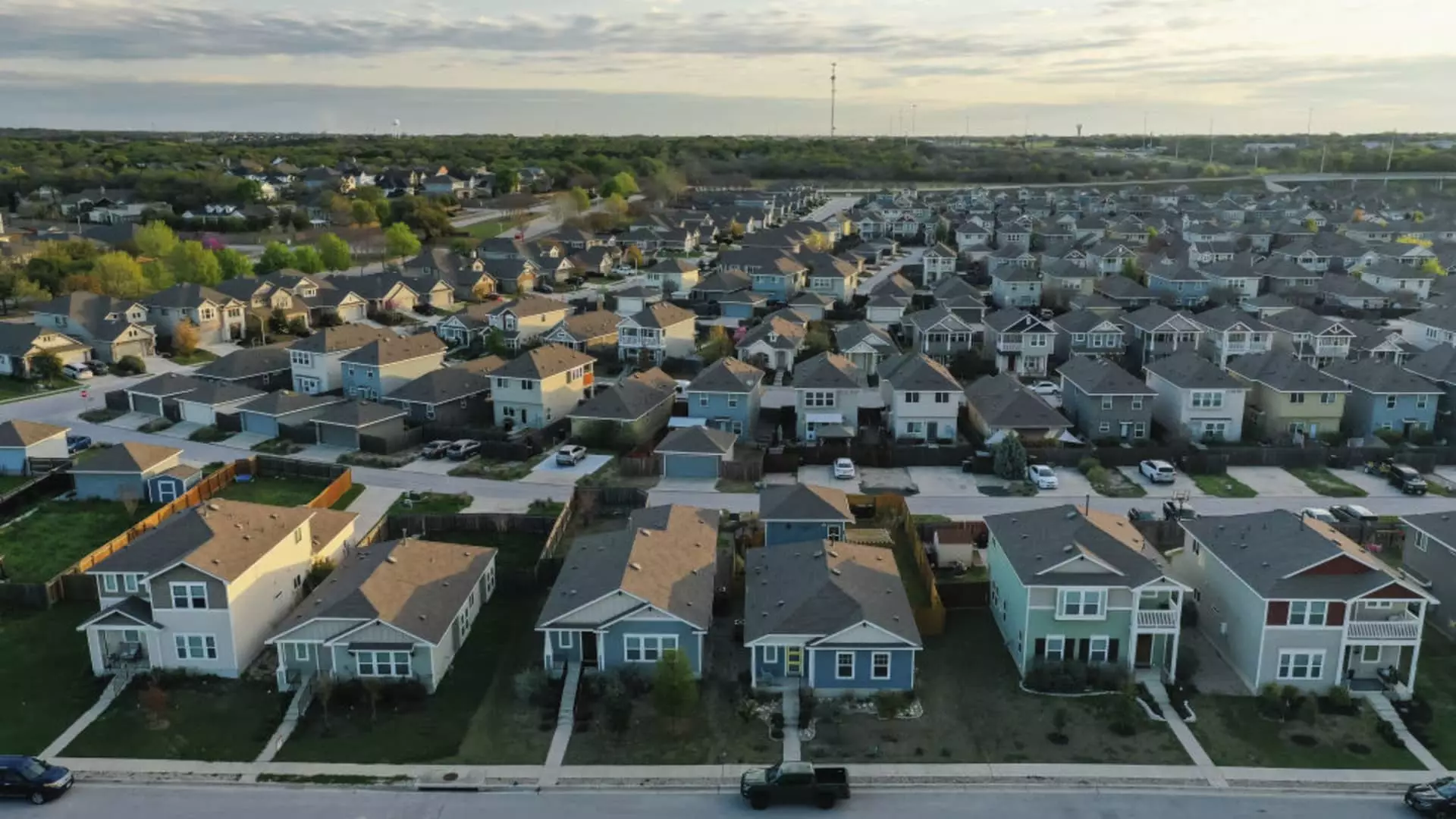As spring ushers in a traditionally vibrant housing season, many potential homebuyers are hesitant to jump into the market. Despite a noticeable uptick in the number of available listings, the lack of incentives coupled with steady mortgage rates and rising prices is causing a stagnation in buyer interest. The latest statistics reveal a 4% drop in mortgage applications for home purchases compared to the previous week, indicating that many buyers are choosing to wait rather than engage in a competitive buying environment. The Mortgage Bankers Association (MBA) confirms this trend, noting that the demand remains flat when compared to the same week last year.
Interestingly, the average loan size for purchase mortgages continues to climb, reaching $447,300—an uptick attributed to diminished government activity in the market. This trend raises questions about affordability, especially for first-time buyers who may find themselves priced out. Although there was a slight decrease in the average interest rate on 30-year fixed-rate mortgages, falling from 7.02% to 6.97%, many borrowers still find themselves in a challenging position. The current rates remain considerably higher compared to pre-pandemic levels, dampening enthusiasm.
On a more optimistic note, there has been a notable increase in refinancing applications, which rose 12% over the preceding week. This uptick, along with a 17% annual increase, reflects the lower mortgage rates enticing homeowners to rethink their financial strategies. However, it is important to acknowledge that these increases come from a low volume base. Many homeowners currently benefit from interest rates significantly lower than those available in the market today, providing limited motivation to refinance unless absolutely necessary.
The current housing market is characterized by a near 30-year low in home sales despite some sellers offering price reductions. The percentage of sellers reducing their asking prices rose to 15.6% in January, compared to 14.7% from the previous year. However, with home prices at record highs, many sellers are still managing to hold firm on their list prices due to ongoing competition. This suggests a disconnect between buyer expectations and seller pricing strategies.
An additional complication for buyers is the increasing amount of time homes are remaining on the market, which averaged 54 days in January—the longest duration since March 2020. While a larger supply of homes might give buyers more options, the competition remains fierce, and the current inventory is still 25% below the levels seen in early 2019. This prolonged selling period indicates that while more homes are available, many properties are not selling quickly, contributing to the uncertainty in the market.
The current spring housing market presents a complex landscape for homebuyers, marked by elevated prices, stagnant demand, and a slight decrease in interest rates. While refinancing scenarios provide some relief to existing homeowners, the broader market continues to create hurdles for new buyers. As we progress into spring, the hope is that more favorable conditions will emerge to revitalize buyer interest and stimulate the market. For now, many potential entrants are left weighing their options carefully in a challenging environment.


Leave a Reply